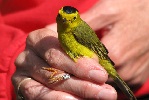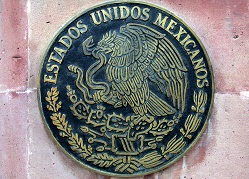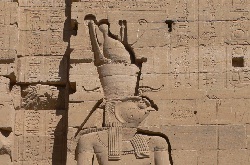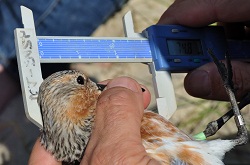|
   
Migratory birds and people - together through time
 World Migratory Bird Day 2012 celebrates the continuing relationship between migratory birds and people. The relationship between birds and people has always been a special one, and the closer one looks at these valuable associations, the greater these connections seem to become. Throughout time and across cultures humans have relied on birds, be it to supply food, to deliver messages, or to serve as symbols of power and prestige. World Migratory Bird Day 2012 celebrates the continuing relationship between migratory birds and people. The relationship between birds and people has always been a special one, and the closer one looks at these valuable associations, the greater these connections seem to become. Throughout time and across cultures humans have relied on birds, be it to supply food, to deliver messages, or to serve as symbols of power and prestige.
Migratory birds - and the incredible annual journeys they take - have always been a particular inspiration to people around the world. Migratory birds completely ignore national borders along their migration paths, and cross entire countries and even continents. The phenomenon of migration has fascinated people for centuries, and continues to do so today.
Birds have been a great source of inspiration for people all over the world and throughout time. Artists of all kinds have used birds in their paintings, stories, for their music and even in fashion. Different aspects of birds - their colourful feathers, brilliant songs and their ability to fly across the globe - are all represented in art.
Numerous products and brands use birds in their styles and logos, and there are coins, stamps and bank notes that depict birds. Many national flags are decorated with birds showing the powerful symbolism used to show national pride and strength.

Furthermore, birds and their eggs have been an indispensable part of the human diet, as an important source of rich protein and nutrients. Migratory birds are also a source food. However, in many parts of the world unsustainable hunting now endangers many populations.
The connections between migratory birds and people make them interdependent. To be able to benefit from our important relationships with migratory birds we must be more conscious about how our actions might affect our feathered friends. Migratory birds have served humans in countless ways over the past centuries, and it is important to ensure they can continue to do so.
Human Activities Gravely Threaten Migratory Birds

Many human activities including excessive land use and unsustainable hunting, as well as the impacts of climate change, fisheries by-catch and pollution now gravely threaten migratory bird populations around the world.
Migratory birds are especially vulnerable because they rely on a number of habitats: not only their migration destinations but also the sites they stop at during their journeys. Human beings are the greatest threat to migratory birds; man-made objects and structures such as buildings, power lines and wind turbines, are often barriers to bird migration and make their journeys much more dangerous.
We should consider the consequences of our actions have on migratory birds. Thinking about the importance of migratory birds for us culturally, economically and environmentally can help us remember that not only are there many threats facing migrating birds, but also that we have many important reasons to protect them. Protecting migrating birds and taking care so we can expect to see them return from their migrations each year will ensure that future generations can benefit and enjoy the important connections between migratory birds and people - together through time.
Migratory Birds are Important Culturally, Economically and Environmentally
Considering the cultural, social, historic, economic and spiritual connections we have with birds, it becomes clear that migratory birds and people are inseparably connected in many different ways and on many different levels. Migratory birds can be found almost everywhere on the planet, so virtually wherever you go, birds will be there too. Some people may have more affection and a deeper bond with birds than others, but when one starts to really think about the cultural, social, historic, economic and spiritual connections we have with birds, it becomes clear that birds and people are linked in many different ways and on many different levels.
Migratory Birds in Culture

Humanity's fascination with migratory
birds is evident in the symbolism throughout history in many ancient
legends. For example, in Egypt the ancient falcon-headed god Horus and
in Peru the Nazca line monuments are testaments to migratory birds'
strong influences on past cultures
[Read
more]
Migratory Birds in the Economy

Many groups and cultures continue to rely economically on migratory birds for their livelihoods, including through employment in the growing global ecotourism. Migratory birds also provide essential ecological benefits and services, such as pollination, to the ecosystems they and we rely on to survive.
[Read
more]
Migratory birds in Science

The phenomenon of bird migration is crucial to the web of life, as migrating birds act as indicators of biodiversity, ecosystem health and climate change. The scientific observation of migratory birds has helped understand many aspects of biodiversity and has helped in setting conservation priorities.
[Read more]
|


